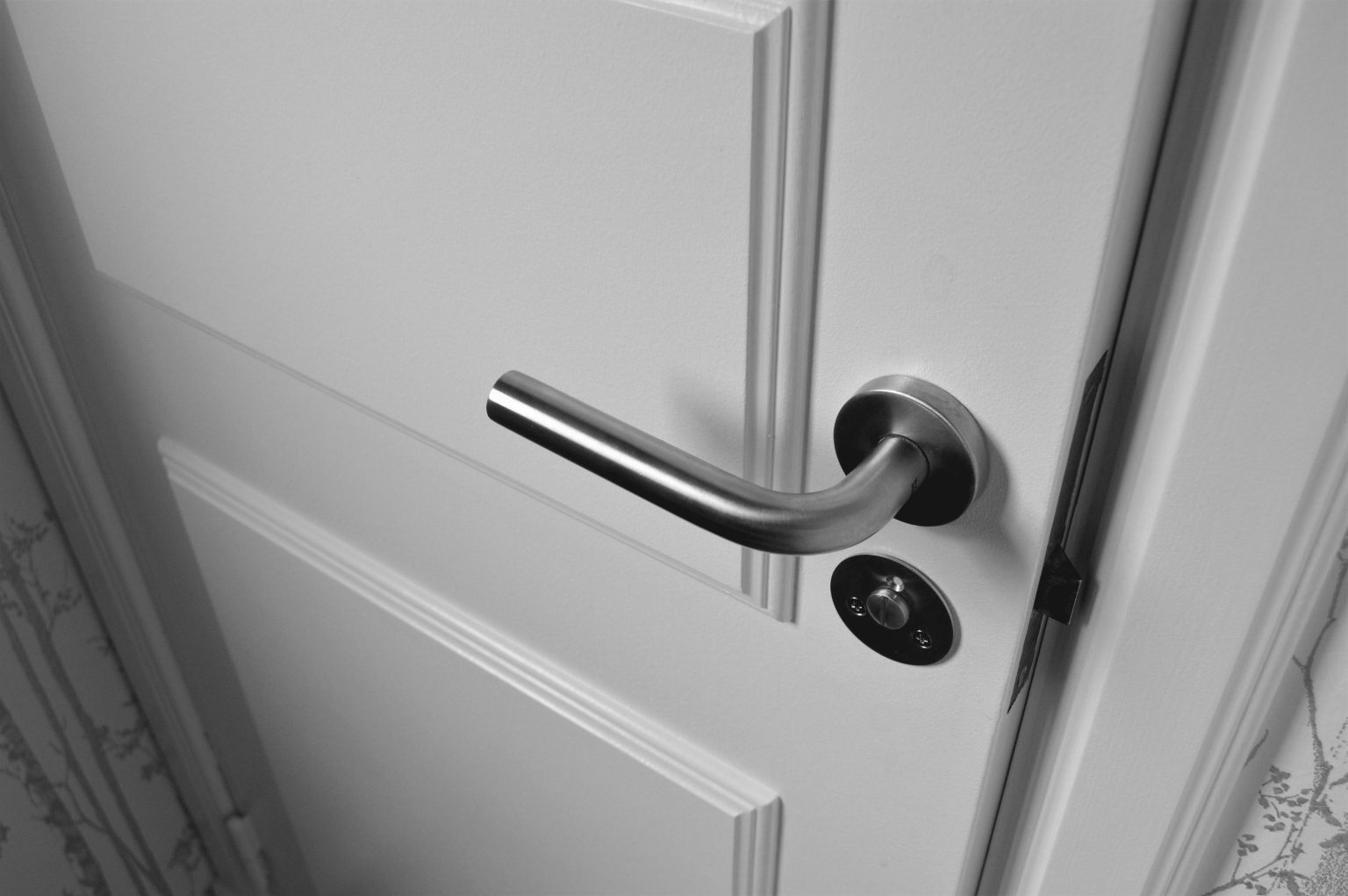When it comes to interior design, doors often get overlooked. Yet, they shape how a space functions, feels, and even looks from room to room. Choosing the right door isn’t just a practical decision; it’s a design choice that affects flow, privacy, noise control, and light. If you’re renovating or building, this guide will help you understand how to select the best door for each room of your house based on needs, style, and layout.
Entryway: First Impressions Matter
Your front door does more than welcome guests. It acts as a security barrier, weather shield, and tone-setter for your home’s entire aesthetic. Whether you lean modern or traditional, your entry door should be sturdy, insulated, and visually striking. For UK homes, it’s also crucial to fit within commonly used UK door sizes, this guide offers a clear breakdown of external frame dimensions and standards, helping you choose a secure front door that fits perfectly.
Material to consider:
- Solid wood: Classic, beautiful, but needs regular maintenance.
- Fiberglass: Durable, energy-efficient, and can mimic wood.
- Steel: High-security and low-maintenance.
Style tips:
- Double doors can create a grand entrance.
- Frosted glass panels offer light without sacrificing privacy.
- Dark, matte finishes give off a contemporary edge.
Living Room: Blending Light and Flow
The living room is where your family gathers, where guests are entertained. You want a door here that invites movement and airiness while optionally offering separation when needed.
Best types:
- French doors: Great for connecting to a patio or sunroom; they open up space and let light flood through.
- Sliding doors: Perfect for modern open-plan homes.
- Pocket doors: Slide into the wall to save space—ideal if square footage is tight.
Think about how much sound control you need. Solid-core doors help reduce noise transfer between the living room and other spaces.
Kitchen: Function Over Flash
The kitchen is high-traffic and often open-plan these days, but there are moments when a door becomes essential, blocking cooking smells, hiding clutter, or dividing from dining areas.
What to consider:
- Swing doors: If your kitchen is enclosed, go for doors that swing both ways—chefs love them for convenience.
- Glass panel doors: These keep a visual connection to the rest of the home while containing mess and smell.
Avoid ornate door details in kitchens they can collect grime. Instead, opt for flat panels or easy-clean surfaces.
Dining Room: Semi-Private, Still Connected
Dining rooms often sit between kitchens and living areas. If you like the idea of formal meals without cutting off the space entirely, doors with transparency are your friend.
Great options:
- Glass-paned French doors: Maintain elegance and openness.
- Barn doors: Offer charm and character, especially in rustic or farmhouse-style homes.
If you’re remodeling, you might explore bifold door alternatives that offer better thermal performance and more design flexibility.
Bedroom: Privacy and Peace
In bedrooms, doors need to serve a few functions: block out noise, ensure privacy, and blend into the aesthetic of the room. You’ll want something solid, dependable, and often understated.
Top choices:
- Solid-core wooden doors: Great sound insulation and a premium feel.
- Flush doors: Clean lines, minimal distraction—ideal for modern bedrooms.
Avoid glass inserts unless it’s frosted or for a closet door. In homes with multiple bedrooms, consistency in door design can also boost resale value.
Bathroom: Moisture-Resistant and Secure
Bathrooms call for function-first doors. They should be resistant to moisture and warping, offer full privacy, and ideally have a locking mechanism.
Best picks:
- PVC doors: Low-maintenance and waterproof.
- Engineered wood: With water-resistant coating for better longevity.
Ventilation is a must. You can opt for doors with built-in louvers or go with an exhaust fan above the doorframe.
Home Office: Focus-Friendly Choices
More people are working from home than ever. If you have a dedicated office space, the right door helps set boundaries between work and personal life.
Good fits:
- Soundproof doors: Reduce distractions from other rooms.
- Frosted glass doors: Maintain privacy while still letting natural light in.
- Double doors: Lend a more professional, stately look.
Think about door handles too—lever handles often feel more refined and accessible compared to basic knobs.
Laundry Room: Keep Noise and Mess Contained
Washing machines aren’t quiet. And let’s be honest—most of us don’t want guests seeing the laundry basket. Doors for utility rooms should seal in sound and clutter.
Consider these:
- Pocket doors: Save space and keep the room hidden.
- Louvered doors: Allow airflow, which is essential in humid laundry areas.
If your laundry room is near the kitchen or hallway, match the door’s look to keep a cohesive style.
Closets and Storage: Compact and Efficient
Closet doors don’t need to be fancy, but they should be practical. You want easy access without making the room feel cramped.
Popular styles:
- Sliding doors: Great for narrow spaces.
- Bi-fold doors: Efficient, though they can feel a little dated depending on the design.
- Flush mount doors: Minimal and clean—blend in seamlessly.
If you’re hunting for something more modern than standard bi-folds, again, explore newer bifold door alternatives like pivoting doors or accordion-style panels that offer smoother mechanics and sleeker design.
Garage Access: Security Comes First
Internal garage doors need to be tough. They’re often fire-rated and must be insulated to maintain the internal temperature and meet building codes.
Mandatory features:
- Solid-core or steel construction
- Self-closing hinge systems
- Weatherstripping
You won’t see this door often, so the style is less critical, but don’t skimp on function or safety.
Pantry: Small Door, Big Decision
Pantry doors can be playful or purely practical. If your kitchen is neutral, a pantry door is a great spot to introduce color or texture.
Ideas to play with:
- Chalkboard doors: Dual function for writing lists or meal plans.
- Frosted glass: Lets in light but hides the clutter.
- Barn-style sliders: A standout feature that adds interest.
Just make sure the opening mechanism doesn’t block key kitchen traffic paths.
Children’s Rooms: Durable and Quiet
Kids are loud. Their doors should be quiet. Look for doors that are sturdy, easy to clean, and ideally good at muffling sound.
Look for:
- Solid wood or MDF: With rounded edges and solid cores.
- Magnetic locks or soft-close mechanisms: Reduce door slamming (a blessing for your ears and walls).
You can even opt for fun elements like writable surfaces or low-height cut-outs for toddlers.
Guest Room: Comfort and Neutrality
Guests should feel like they have their own space, so noise control and privacy are key here too. You don’t want doors that creak or feel flimsy.
Smart choices:
- Traditional panel doors: Fit most decor styles and offer a sense of welcome.
- Soft-close hinges: A Classy touch that makes night movement quieter.
You might also add a simple lock for peace of mind without making the room feel inaccessible.
Basement: Safety, Insulation, and Access
Basement doors vary widely depending on how finished the space is. You may need fire-rated options or insulated doors if it’s connected to living areas.
Recommendations:
- Insulated exterior-grade doors: If the basement opens outdoors.
- French doors or sliders: If your basement is a secondary living area or guest suite.
Think about humidity levels, solid wood may warp over time if moisture is an issue, so composite or engineered materials are smarter here.
Attic Access: Keep it Minimal but Safe
Attic doors are often pull-downs or small crawl doors. You won’t see them much, but they still matter.
Essentials:
- Well-insulated hatch doors: To prevent heat loss.
- Secure latch mechanisms: To avoid drafts or pest access.
For converted attic spaces, regular doors may apply, and in those cases, mimic the bedroom style for cohesion.



